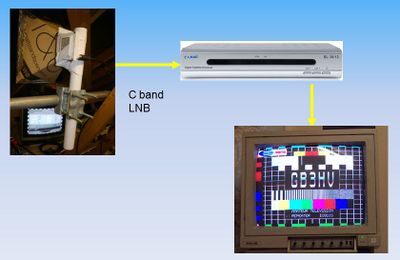Difference between revisions of "3.4 GHz DATV"
(Created page with "As the UK band has recently been reduced to 10 MHz (3400 to 3410MHz) it is only possible to run DATV and there is currently very little activity in the UK apart from repeater...") |
|||
| Line 13: | Line 13: | ||
===Transmitting 3.4GHz DATV=== | ===Transmitting 3.4GHz DATV=== | ||
| − | Airspan AS4000 | + | * Airspan AS4000 |
| + | |||
| + | The Airspan AS4000 is an outdoor consumer unit operating in duplex mode (Tx and Rx) on 3.4 GHz - it needs DC supply, transmit IF and reference oscillator up the co-ax and sends rx IF down. | ||
| + | |||
| + | The unit IF is at 820 MHz and G6GVI and M0DTS have both modified the local oscillator to provide outputs at 1296. | ||
| + | |||
| + | [http://www.qsl.net/g6gvi/9cm.html Link to G6GVI page] | ||
| + | |||
| + | * Ionica PA | ||
Revision as of 06:18, 26 May 2017
As the UK band has recently been reduced to 10 MHz (3400 to 3410MHz) it is only possible to run DATV and there is currently very little activity in the UK apart from repeater outputs.
Reports from the repeaters on 3.4GHz suggests it is very low noise spectrum and actually performs as well if not better than 2.3GHz.
There is (or was) a lot of surplus transmit (and receive) equipment on the surplus market, mainly from the failed Ionica broadband wireless system, and it is a very easy band to get on to, both for Tx and Rx.
Receiving 3.4 Ghz DATV
However it is actually a very easy band to receive DATV on using C band satellite LNBs.
Transmitting 3.4GHz DATV
- Airspan AS4000
The Airspan AS4000 is an outdoor consumer unit operating in duplex mode (Tx and Rx) on 3.4 GHz - it needs DC supply, transmit IF and reference oscillator up the co-ax and sends rx IF down.
The unit IF is at 820 MHz and G6GVI and M0DTS have both modified the local oscillator to provide outputs at 1296.
- Ionica PA
